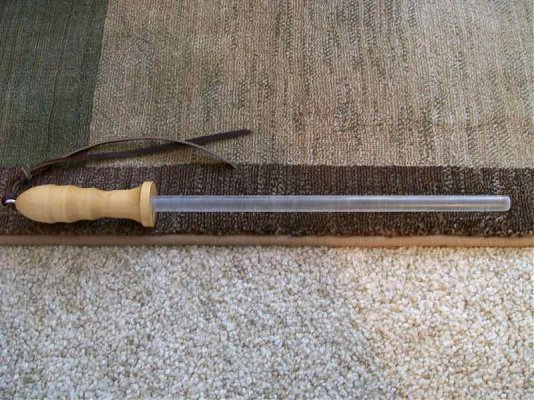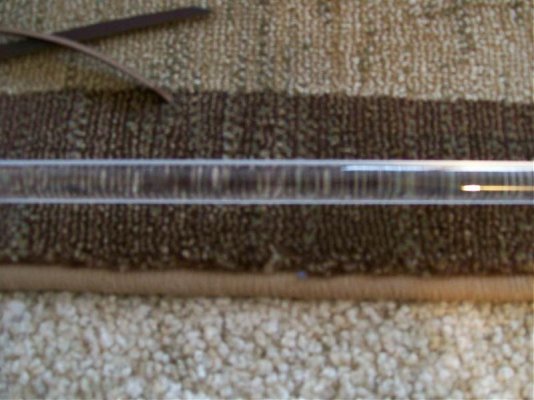Poppinfresh
Senior Cook
- Joined
- Mar 8, 2006
- Messages
- 496
I'm in the camp that a dull knife IS more dangerous. I've experienced it firsthand--and I've got some pretty mad knife skills, if I do say so myself. The dull part isn't the part that's dangerous--it's that little section of the knife that for whatever reason is still sharp and throws your slice stroke off.
As to sharpening....when it comes time to sharpen my blades, they go to a professional. No exceptions. The ceramics go to the manufacturer, the metal knives earn a call to the mobile knife sharpener. It only costs a couple bucks a knife and best of all the guy will come to you so you don't even have to pack anything up and drive somewhere. Though I will give a nod to something Anolon has recently made. They bill it as a sharpening system...kind of hard to explain but basically it's got 3 slots with 3 different stone wheels in them, you fill it with water and use it on the knives.
I don't use the first 2 stones at all because they're sharpening stones and as I said, the pros are the only ones that do that to my knives, but the 3rd one is a honing stone, and it works wonderfully. I like it better than my honing steel. Got it at Macy's for like 20 bucks.
Edit: Linky Anolon.com - Cookware, Bakeware, Cutlery, Accessories, Serveware, Tools and Gadgets
As to sharpening....when it comes time to sharpen my blades, they go to a professional. No exceptions. The ceramics go to the manufacturer, the metal knives earn a call to the mobile knife sharpener. It only costs a couple bucks a knife and best of all the guy will come to you so you don't even have to pack anything up and drive somewhere. Though I will give a nod to something Anolon has recently made. They bill it as a sharpening system...kind of hard to explain but basically it's got 3 slots with 3 different stone wheels in them, you fill it with water and use it on the knives.
I don't use the first 2 stones at all because they're sharpening stones and as I said, the pros are the only ones that do that to my knives, but the 3rd one is a honing stone, and it works wonderfully. I like it better than my honing steel. Got it at Macy's for like 20 bucks.
Edit: Linky Anolon.com - Cookware, Bakeware, Cutlery, Accessories, Serveware, Tools and Gadgets
Last edited:






